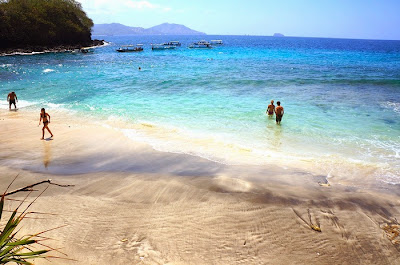Princess Cruises has included a 10-day trip in Indonesia as part of 15 Southeast Asia itineraries offered during the four-month November 2014 to February 2015 season.
Departing on Jan. 13, 2015, the trip will include stops in Jakarta, Bali, Komodo island and Lombok in West Nusa Tenggara aboard a ship called the Sapphire Princess. Tickets start at SG$1,629 (US$1,283).
The ship can accommodate up to 2,670 passengers and offers features such as a poolside theater and top-deck retreat.
The company has opened a new office in Singapore, its home base for catering to the Southeast Asia cruise market.
"Southeast Asia has so much potential to become as popular as Caribbean cruises because not only does it have the sun, sea and sand, but it also offers cultural and shopping experiences as well. The destinations from one port to another are also not far away," Princess Cruises director for Southeast Asia Farriek Tawfik said at a press conference on Wednesday.
Although not all ports in Indonesia are ready to accommodate the 116,000-ton ship, Tawfik said that plenty of plans are currently being implemented and the government has agreed to give all kinds of assistance.
"We will also improvise. In Komodo, for example, the ship will be anchored not far from the island, and we will use smaller boats to transfer passengers there," said Tawfik.
He added that they have plans to expand the itineraries to Sumatra and Sulawesi as well.
According to the Tourism and Creative Economy Ministry, up to 112,882 visitors came to Indonesia on 214 cruise calls in 2012. This year, the ministry is expecting to increase those numbers to 147,134 people and 308 calls.
Princess Cruises is part of Carnival Corporation & plc and presently owns 17 ships and carries 1.3 million passengers each year. Its popular destinations include Alaska and Europe.



.jpg)
.jpg)






